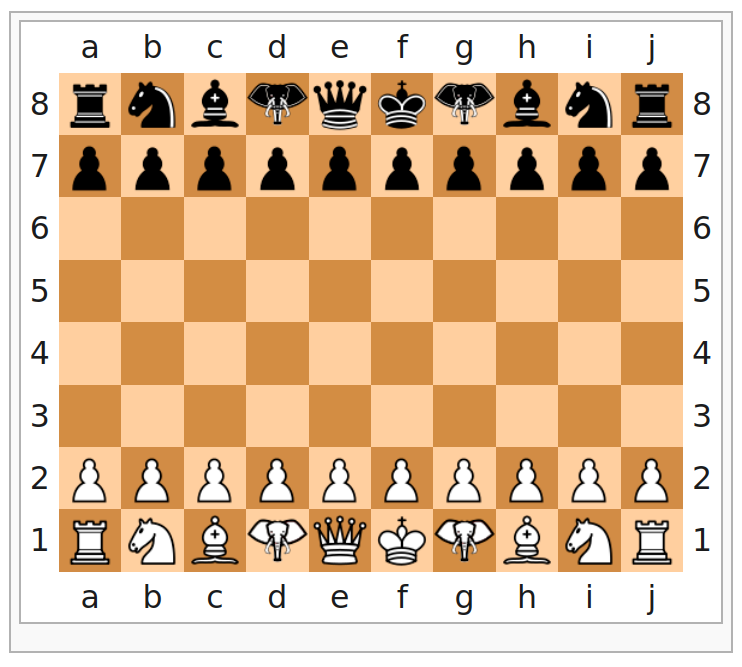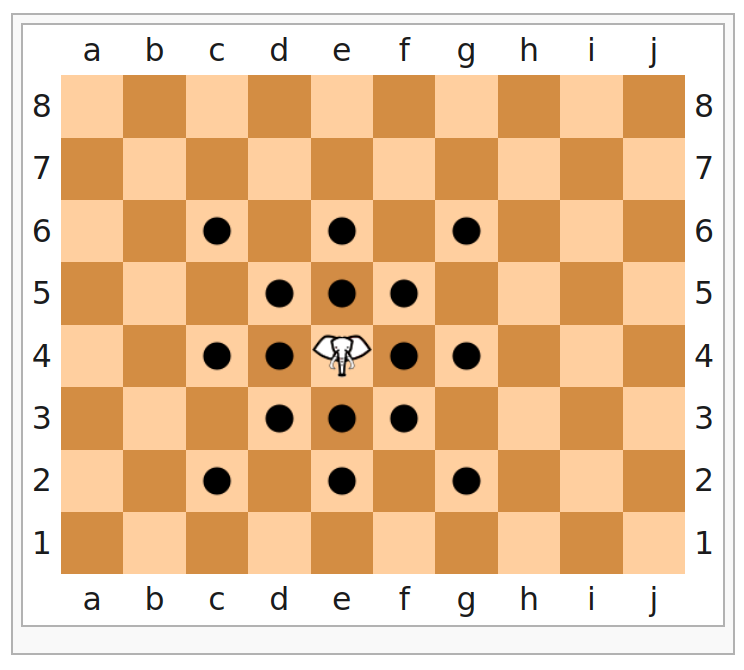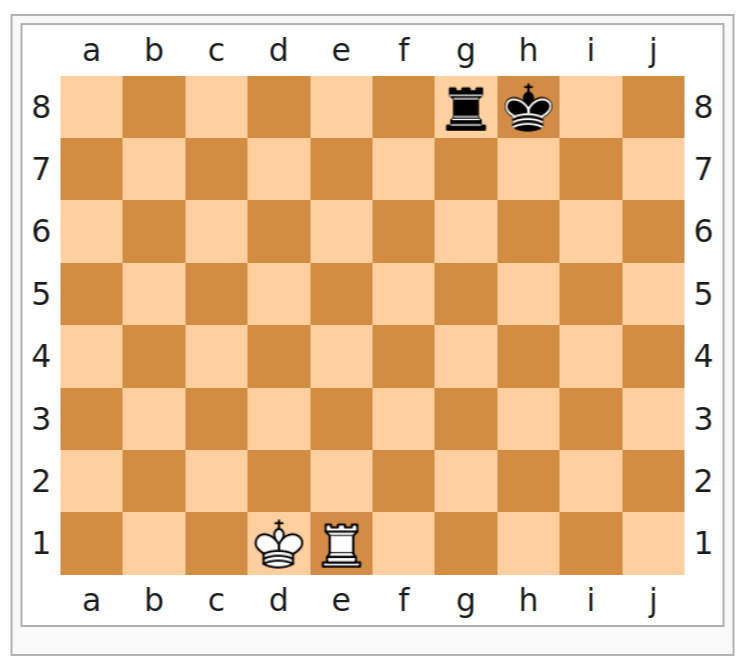The generally known chess rules and symbols apply to the game. The four fighting elephants, as new additions, must also comply with these rules. They are placed to the left and right of the queen and king.

The elephant
The elephant can cross friend and foe with a double step in either direction. However, it is also allowed to take a single step to either side (see diagram).

Due to its versatility, it is an ideal blockade breaker and a strong endgame opponent. Like the knight, it is also capable of deciding a game by stifling mate. In the final battle, the king and queen easily checkmate against the enemy king despite the danger of stalemate. On the other hand, the king and queen can do nothing against the enemy king and its fighting elephant except draw.
Even the knight has no chance against the gray giant. Despite his artistic leaps, he is soon driven into a corner and trampled underfoot.
In many cases, the elephant is stronger than the rook.
Castling
The castling technique also remains the same. Only the distance between the king and the edge of the square is increased by one square (in the diagram black has made the minor castling and white the major castling).

Finally, a remark for the Chess 80 player:
By adding the medieval piece, the course of the game is somewhat slower and a little more complicated than in modern chess. However, this brings the game closer to its origins.
The four elephants and the game board can be ordered here for €80 (plus shipping costs).

